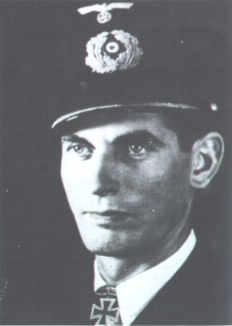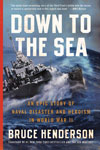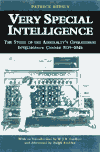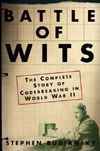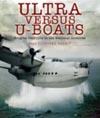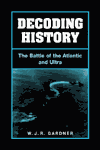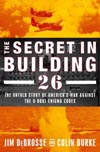The first wartime naval Enigma machine (M3) was identical to the model used by the German Army and Air Force, but it was issued with additional rotors, VI, VII and VIII, which were reserved for the Kriegsmarine (German Navy). However, the Kriegsmarine also employed codebooks to shorten signals as a precaution against shore high-frequency direction-finding, and some manual ciphers. The most important codebooks were the Kurzsignalheft (short signal book) for reports such as sighting convoys, and the Wetterkurzschlüssel (weather short signal book) for weather reports.
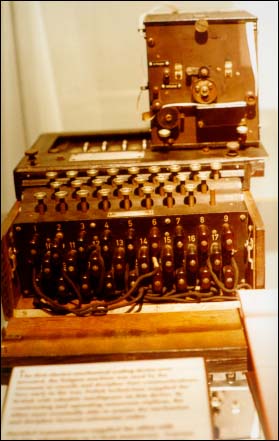 Naval Enigma signals used different ciphers, each with its own daily key (rotor order, ring settings, plugboard connections and ground setting). The principal cipher was Heimisch (Heimische Gewässer - known to Bletchley Park as Dolphin) for U-boats and surface ships in 'Home Waters', including the Atlantic. At least 14 other naval Enigma ciphers were used later in the war.
Naval Enigma signals used different ciphers, each with its own daily key (rotor order, ring settings, plugboard connections and ground setting). The principal cipher was Heimisch (Heimische Gewässer - known to Bletchley Park as Dolphin) for U-boats and surface ships in 'Home Waters', including the Atlantic. At least 14 other naval Enigma ciphers were used later in the war.
Most ciphers had Allgemein (general) and Offizier keys. Offizier signals were first enciphered using the plugboard connections from monthly Offizier keylists. The complete message was then enciphered a second time using the Allgemein key. A few ciphers also had Stab (Staff) keys, which were also doubly enciphered, but had their own special settings. Offizier signals often took a week or more to break at Bletchley.
The British codebreakers at Bletchley Park received an Enigma machine and rotors I to V from the Polish Cipher Bureau in August 1939. Marian Rejewski, an outstanding Polish cryptanalyst, had reconstructed the wiring of rotors I to III at the end of 1932 using mathematical techniques, and the wiring of rotors IV and V before the war began (he had also developed his bomba kryptologiczna in 1938 to aid him to break Enigma - an idea Turing later emulated). The British recovered rotors VI and VII from the crew of U-33 on 12 February 1940, while rotor VIII was captured in August 1940.
In May and June 1940, using cleartext and cipher text captured from Schiff 26, Hut 8 at Bletchley Park had solved some April naval Enigma traffic with the aid of the first bombe (a high speed key-finding aid). That bombe, which was Alan Turing's brainchild, was much slower than the bombes with the 'diagonal board' invented by Gordon Welchman. The improved bombe, with the board, entered service in mid-August.
Hut 8 faced two major problems in trying to break naval Enigma:
- eight rotors could be arranged in 336 different ways (8x7x6), instead of 60 for Army or Luftwaffe Enigma (5x4x3). A bombe run using all the Kriegsmarine's rotor combinations took five times longer than for Army or Luftwaffe Enigma - and bombes were very scarce until large numbers of US Navy bombes became operational in late 1943;
- 'cribs' (probable plain text, used to 'program' the bombes) were non-existent until mid-1941.
First main breaks of naval Enigma
Hut 8 could not read Dolphin traffic without delay until June and July 1941, when it used keys captured from the weather ships München and Lauenburg. Decrypts were translated by Hut 4, which then sent their full text by teleprinter to the Admiralty's Operational Intelligence Centre (OIC) in London. Intelligence from the decrypts enabled the OIC to re-route many convoys past the few U-boats (about 20) then in the North Atlantic. Re-routeing convoys on the basis of 'Ultra' saved many lives and hundreds of thousands of tons of vital shipping.
Hut 8 broke Dolphin cryptanalytically from August 1941 onwards. It was helped because the order in which the rotors were inserted in Enigma changed only every two days. If a crib was available, a bombe run on the second day could therefore find the day's settings in under 20 minutes, saving much precious bombe time.
Manual weather ciphers broken by Bletchley's weather section in Hut 10 provided many cribs. The Atlantic U-boats made numerous weather reports, encoded on the Wetterkurzschlüssel before encipherment. From February 1941 on, Hut 10 broke general weather signals, enciphered with the naval manual meteorological cipher, which incorporated the U-boats' weather reports. In early May 1941, Bletchley received a copy of the 1940 edition of the Wetterkurzschlüssel from München and U-110. This enabled Hut 8 to reconstruct the U-boats' weather signals, and so obtain a second source of cribs. In addition, identical signals on subjects such as mine-clearing were sometimes sent using naval Enigma and another manual cipher, the Werftschlüssel ('dockyard cipher'). When Hut 4 broke the signals using Werftschlüssel, Hut 8 had more cribs.
Hut 8 suffered a massive reverse on 1 February 1942 when a new Enigma machine (M4) came into service on Triton (codenamed Shark by Hut 8), a special cipher for the Atlantic and Mediterranean U-boats. The combination of M4, Shark and a second edition of the Wetterkurzschlüssel proved devastating. Bletchley Park became blind against Shark for over 10 months. Fortunately, M4's fourth rotor (beta) was not interchangeable with rotors I to VIII. Beta increased M4's power by a factor of 26, but rotors could still only be mixed in 336 (8x7x6) different ways - not 3,024 (9x8x7x6).
At one setting of beta, M4 emulated M3, which was M4's undoing. Three members of the British destroyer HMS Petard seized the second edition of the Wetterkurzschlüssel from U-559 on 30 October 1942, before it sank near Port Said. Hut 8 once again had cribs, which it could run on three-rotor bombes, the only type available. The U-boats were using M4 in M3 mode when enciphering the short weather reports. A three-rotor bombe run on 60 rotor combinations therefore took only about 17 hours instead of the 442 hours (18 days) required if M4 had used its full potential.
On 13 December 1942, Bletchley teleprinted the OIC the positions of over 12 Atlantic U-boats, on dates from 5 to 7 December, as established from Shark weather signals. Hut 8 had penetrated M4 Shark with the help of the weather broadcasts broken by Hut 10. Intelligence from Shark, although sometimes badly delayed, played a critical part in the Battle of the Atlantic, perhaps saving from 500,000 to 750,000 tons of shipping in December 1942 and January 1943 alone.
Hut 8's use of the Wetterkurzschlüssel against Shark was short-lived. A third edition of the weather short signal book took effect on 10 March 1943, depriving Hut 8 of cribs. Bletchley had feared that the change would blind it for several months, but by using short signal sighting reports (made by U-boats in contact with convoys and encoded from the Kurzsignalheft) as cribs, Hut 8 re-entered Shark again on 19 March and broke it for 90 out of 112 days before 30 June. Kurzsignalheft short sighting reports also used M4 in M3 mode - and the Kurzsignalheft had also been recovered from U-559.
British and US Navy four-rotor bombes entered service in June and August 1943, respectively, but some July and August Shark keys took up to 26 days to solve. However, from September on, Shark was generally broken within 24 hours. At the end of 1943, work on Shark was transferred to the US Navy's Op-20-G codebreaking unit in Nebraska Avenue, Washington, DC, because the US Navy had over 50 bombes by mid-November.
The main role for naval Ultra was probably in re-routeing convoys, but it was used in many different ways. The US Navy employed Ultra offensively in 1943 and 1944 to sink many of the important supply U-boats (Types XB and XIV, such as U-118, U-233 and U-460), which applied a multiplier effect to the U-boats by replenishing them at sea.
The Wetterkurzschlüssel and Kurzsignalheft were retrieved from U-559 by Lieutenant Anthony Fasson, Able Seaman Colin Grazier (both were posthumously awarded the George Cross - Britain's second highest award for gallantry) and 16 year-old Tommy Brown (who survived to receive the George Medal). Without their bravery, Shark would not have been broken before four-rotor bombes came into service, if at all. The Allies (Britain, Canada and the United States) would not then have established naval supremacy in the Atlantic until the second half of 1943 at the earliest, which would have probably delayed the D-Day Normandy landings until 1945. Few acts of courage by three individuals can ever have had so far-reaching consequences. Without Ultra, the U-boats would still have been defeated in the long run, but the cost in human life in the global conflict would have been even more terrible than it was.
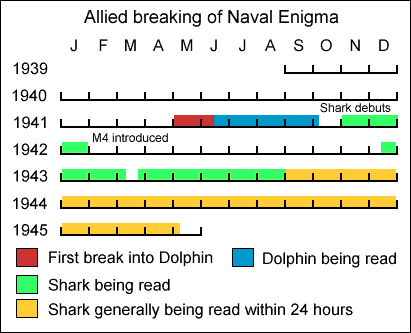
Dolphin was broken throughout the war
but the cipher was not used by U-boats after Oct 5, 1941.
Sources
- Ralph Erskine, Naval Enigma: The Breaking of Heimisch and
Triton,
Intelligence and National Security
[Frank Cass], 3(1) (1988) 162-183.
Further reading,
David Kahn, Seizing the Enigma: The Race to Break the U-Boat Codes.
Selected media links
|
|
|
|
|
